
Chrysotoxum cautum is a species of hoverfly. It is found in southern Britain and Europe East into the Palearctic but is normally encountered in small numbers. The larvae are thought to feed on root aphids. Adults are usually found on the edges of woodland or scrub or along hedgerows where they visit a wide range of flowers.

Myathropa florea is a very common European and North African species of hoverfly. Adults may be seen on flowers from May to September. It is of a similar size to the common drone fly, but Myathropa are generally more yellow, with two light bands to the thorax, interrupted with a black central smudge. In museum specimens, any yellow colour soon fades to brown after death. Like most Eristalini, Myathropa are rather variable in size, shape and colour.
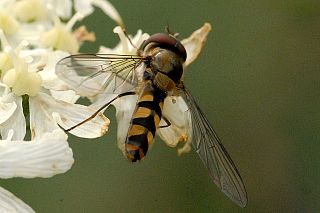
Meliscaeva auricollis is a West Palearctic species of hoverfly.
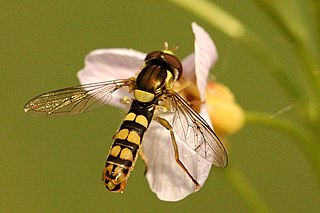
Sphaerophoria interrupta is a Palearctic species of hoverfly.
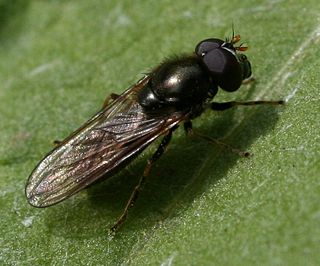
Cheilosia pagana is a Holarctic species of hoverfly. Like most Cheilosia it is black, and because of this may often be overlooked as a hoverfly. One identifying feature is a large red to orange 3rd antennal segment.
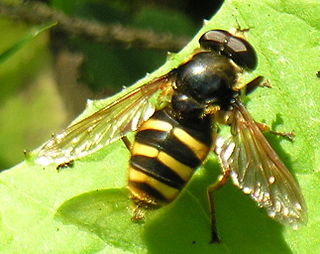
Sericomyia silentis, is a species of hoverfly. It is widespread throughout the Palearctic but normally encountered in small numbers in mountain regions and moorland and bog locations.

Cheilosia grossa is a widespread European species of hoverfly. Adults can be found in spring on sallow catkins and the larvae tunnel in the stems of various thistle species.

Pipiza noctiluca is a species of Hoverfly, from the family Syrphidae, in the order Diptera.
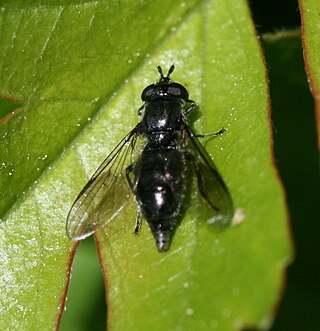
Pipiza austriaca is a species of hoverfly, from the family Syrphidae, in the order Diptera.

Pipiza luteitarsis is a species of Hoverfly, from the family Syrphidae, in the order Diptera.

Pipizella viduata is a species of Hoverfly, from the family Syrphidae, in the order Diptera.

Parasyrphus lineolus is a Holarctic species of hoverfly.

Parasyrphus vittiger is a species of hoverfly, from the family Syrphidae, in the order Diptera.

Parhelophilus consimilis is a Palearctic hoverfly.
Melangyna arctica is a Holarctic species of hoverfly.

Cheilosia nebulosa is a Palearctic species of hoverfly.

Chrysotoxum festivum is a species of hoverfly.

Orthonevra geniculata is a species of hoverfly found in the Palearctic.
Chrysotoxum fasciatum is a species of Holarctic hoverfly.
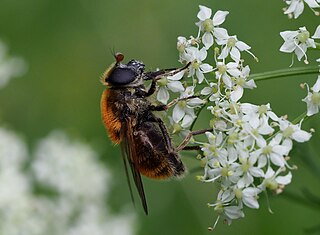
Cheilosia chrysocoma is a European species of hoverfly.


















